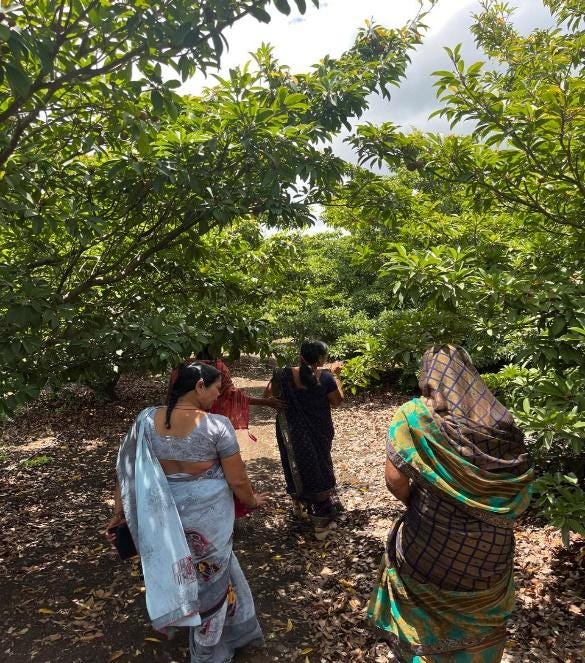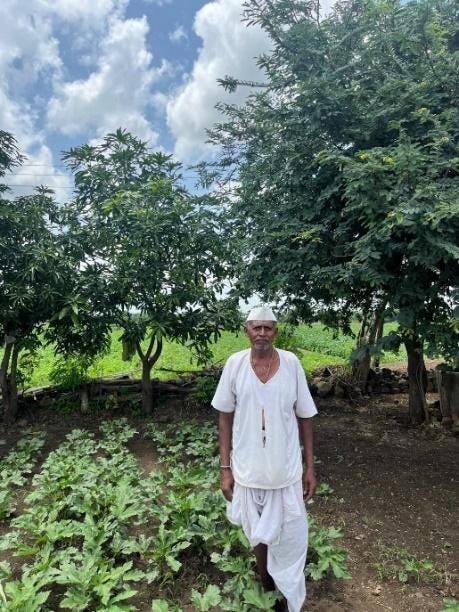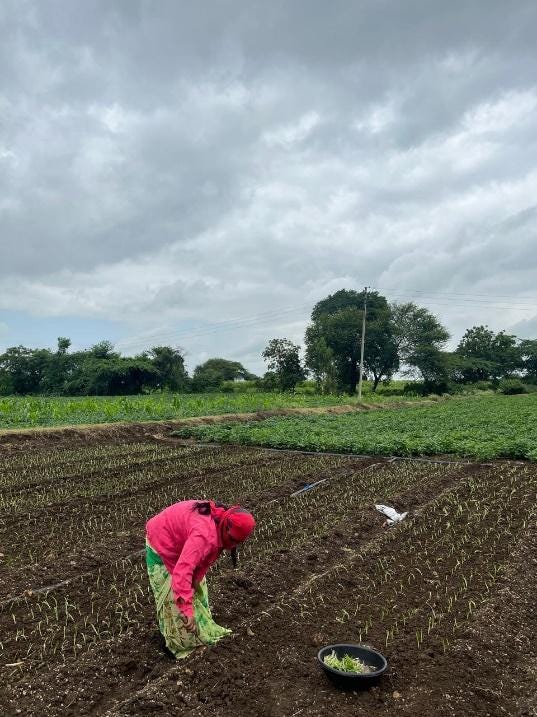Parched Dreams: Water Scarcity in Rural Maharashtra, India
Siddhant Malhotra, Tata Institute of Social Sciences, Mumbai
Keywords: Agricultural Sustainability, Groundwater Depletion, Climate Variability
Maharashtra, despite being India's most industrially advanced state, faces a growing water crisis in its rural regions. The situation is made worse by weak policies, insufficient infrastructure, and farming practices that are not sustainable. During my visit to Tuljapur in the Marathwada region of Maharashtra, I saw firsthand the struggles farmers face due to the ongoing water scarcity.,
Maharashtra's rural areas, home to 58% of the state's population, face severe water scarcity, with around 1,500 communities lacking safe drinking water and over 23,000 experiencing intermittent shortages, particularly during the dry season (Brunner et al., 2009). Almost 90% of rural water supply relies on rapidly depleting groundwater, pushing farmers to rely on increasingly scarce and costly water resources (Shah et al., 2021). Over-reliance on groundwater, especially in drought-prone areas like Marathwada, has led to aquifer depletion, declining agricultural productivity, and rising crop failures, further exacerbating the rural economy's dependence on unsustainable water management practices (Gadgil et al., 2002; Hiremath & Shiyani, 2013).

The Silent Wells of Karkramba: A Farmer's Fight for Survival
“My name is Nana(used an alias for anonymity),” he shouted, his voice carrying a mix of defiance and desperation. At 76 years old, Nana is a farmer in Karkramba village, located in Tuljapur taluka of Maharashtra's Osmanabad district. Once the proud owner of three acres of fertile land, he now holds just 35 guntas( 1 acre is 40 guntas)—a fraction of what he used to cultivate. “I had to sell the rest,” he explained, his eyes heavy with the burden of the past.

Nana’s journey took a hopeful turn when he joined forces with Swayam Shikshan Prayog (SSP), a well-known organization in Osmanabad that promotes organic and climate-resilient farming. Inspired by their mission, Nana adopted organic methods, determined to transform his land into a sustainable haven. But the region’s water scarcity cast a shadow over his dreams.
The tipping point came when Nana decided to invest in borewells to address his irrigation challenges. Each borewell cost him approximately ₹1.5 lakh (about $1,800 USD)—a massive sum for a farmer of modest means. Believing this would secure his farming future, he installed three borewells. But none yielded water. The groundwater, depleted by years of over-extraction and mismanagement, had run dry.
The failure of the borewells drained Nana of his savings and shattered his vision of sustainable farming. “I thought I would never have to worry about water again,” he said. Instead, he was forced to sell over two-thirds of his land to repay his debts. His hopes of continuing organic farming evaporated alongside the water in his wells.
Now, Nana is classified as Below Poverty Line (BPL) and practices only subsistence farming on his remaining land. “I am too old, and the land is too small to produce much,” he explained with quiet resignation. His days are spent ensuring his own survival rather than nurturing the land he once hoped would thrive sustainably.
Nana’s story is emblematic of the broader water crisis gripping Maharashtra.
Climate Variability and Its Impact on Agriculture
The Indian summer monsoon (ISM), which supplies 80% of agricultural water, has become increasingly unpredictable, with delayed onset, uneven distribution, and prolonged dry spells. These shifts in climate make it even harder for farmers to plan and predict water usage, leading to a rise in crop failures and increased dependence on unsustainable water extraction methods (Swami et al, 2017).
Soybean, the main crop of this region, is increasingly impacted by climate variability. Erratic rainfall, including excess water and droughts, harms yields, while rising temperatures cause heat stress, reducing pod formation and seed size. As groundwater depletes, farmers invest in costly borewells with limited success, leading to financial losses and deeper debt. To secure soybean farming's future, improved water management, climate-resilient crops, and policy support are essential.

For farmers in these regions, climate variability is a constant struggle. Inconsistent water supply forces many to depend on costly, unreliable borewells, deepening their debt. Crop failures due to unpredictable weather leave farmers with fewer resources and no safety nets, forcing them to sell land or abandon traditional farming. Limited access to climate-resilient technologies and financial support leaves them trapped in a cycle of vulnerability, with older farmers or those with small landholdings facing even greater challenges in adapting to climate risks (S. Romit et al, 2021).
References:
Gadgil, S., et al. 2002. Climate Variability and Its Impact on Agriculture in the Indian Peninsula.
Hiremath, R., & Shiyani, R. 2013. Impacts of Climate Change on Agricultural Productivity in India
— Siddhant Malhotra
Author’s Bio

Connect with us at:
Thanks for reading Just Rural Futures! Subscribe for free to receive new posts and support my work.



